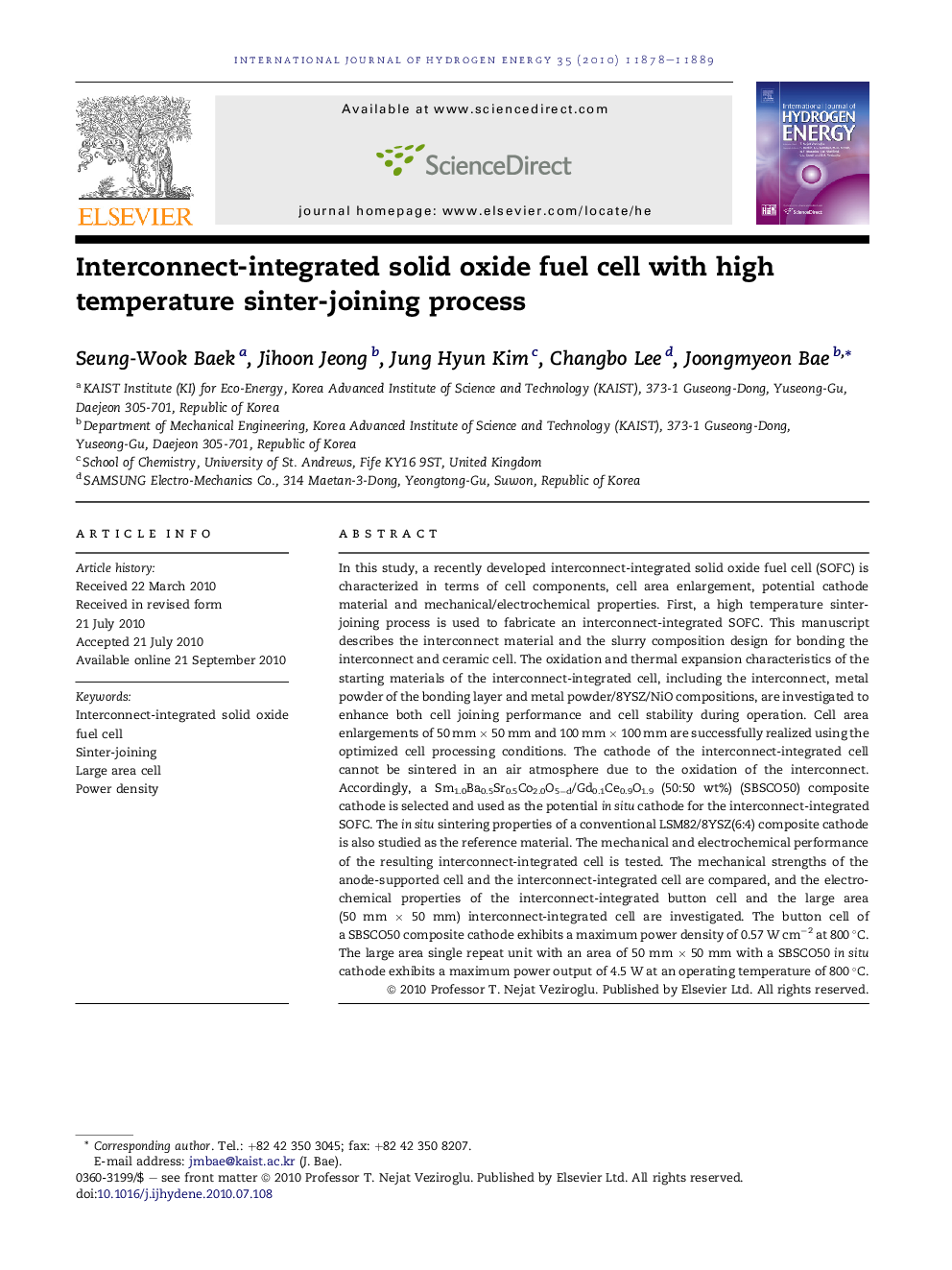| Article ID | Journal | Published Year | Pages | File Type |
|---|---|---|---|---|
| 1272558 | International Journal of Hydrogen Energy | 2010 | 12 Pages |
In this study, a recently developed interconnect-integrated solid oxide fuel cell (SOFC) is characterized in terms of cell components, cell area enlargement, potential cathode material and mechanical/electrochemical properties. First, a high temperature sinter-joining process is used to fabricate an interconnect-integrated SOFC. This manuscript describes the interconnect material and the slurry composition design for bonding the interconnect and ceramic cell. The oxidation and thermal expansion characteristics of the starting materials of the interconnect-integrated cell, including the interconnect, metal powder of the bonding layer and metal powder/8YSZ/NiO compositions, are investigated to enhance both cell joining performance and cell stability during operation. Cell area enlargements of 50 mm × 50 mm and 100 mm × 100 mm are successfully realized using the optimized cell processing conditions. The cathode of the interconnect-integrated cell cannot be sintered in an air atmosphere due to the oxidation of the interconnect. Accordingly, a Sm1.0Ba0.5Sr0.5Co2.0O5−d/Gd0.1Ce0.9O1.9 (50:50 wt%) (SBSCO50) composite cathode is selected and used as the potential in situ cathode for the interconnect-integrated SOFC. The in situ sintering properties of a conventional LSM82/8YSZ(6:4) composite cathode is also studied as the reference material. The mechanical and electrochemical performance of the resulting interconnect-integrated cell is tested. The mechanical strengths of the anode-supported cell and the interconnect-integrated cell are compared, and the electrochemical properties of the interconnect-integrated button cell and the large area (50 mm × 50 mm) interconnect-integrated cell are investigated. The button cell of a SBSCO50 composite cathode exhibits a maximum power density of 0.57 W cm−2 at 800 °C. The large area single repeat unit with an area of 50 mm × 50 mm with a SBSCO50 in situ cathode exhibits a maximum power output of 4.5 W at an operating temperature of 800 °C.
